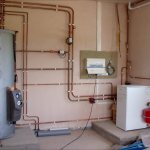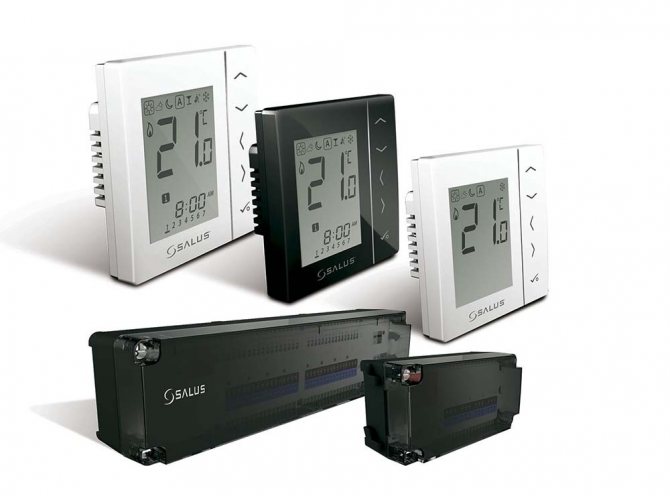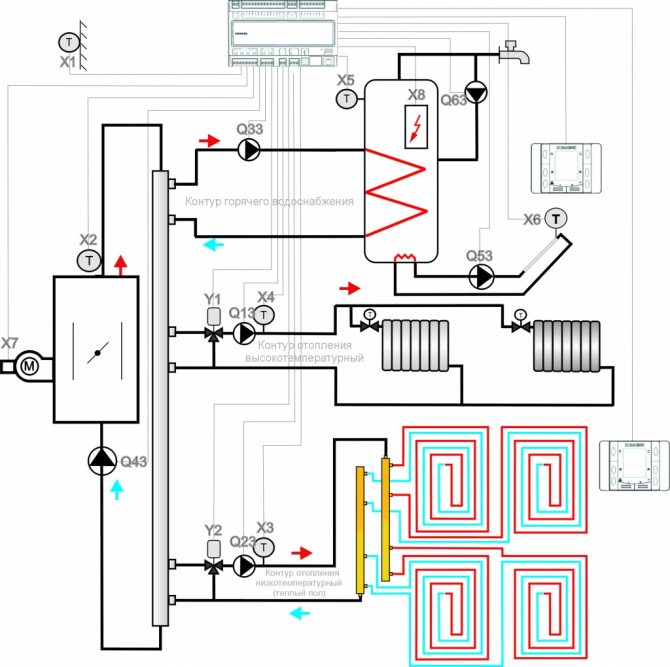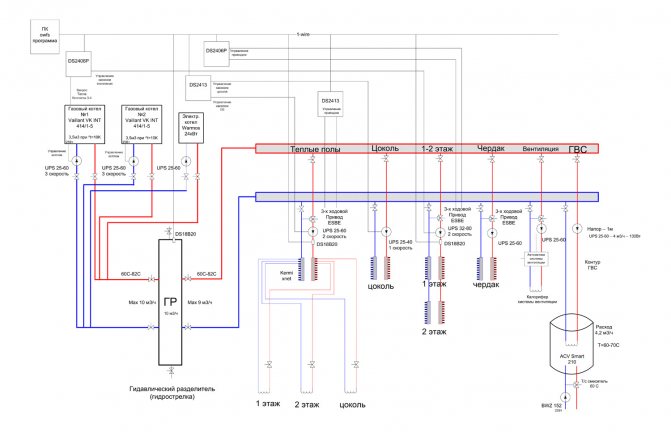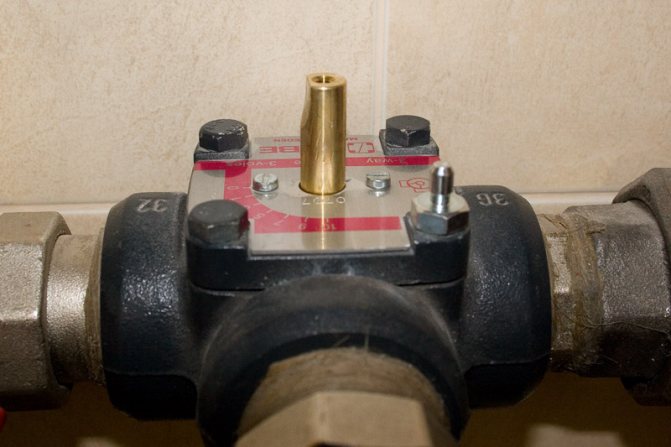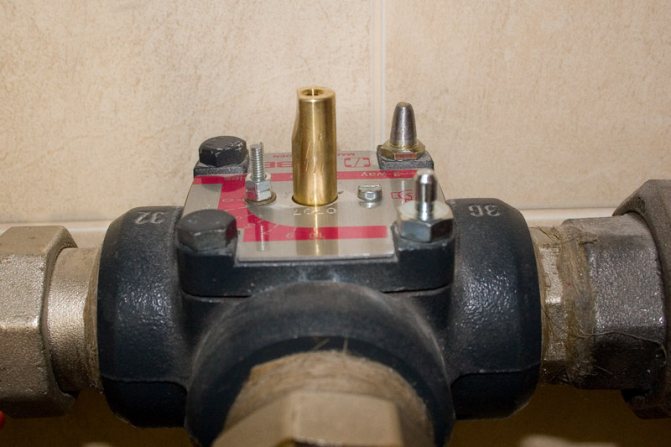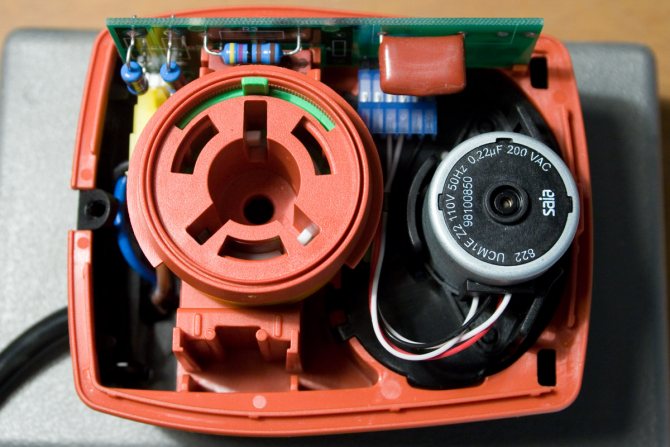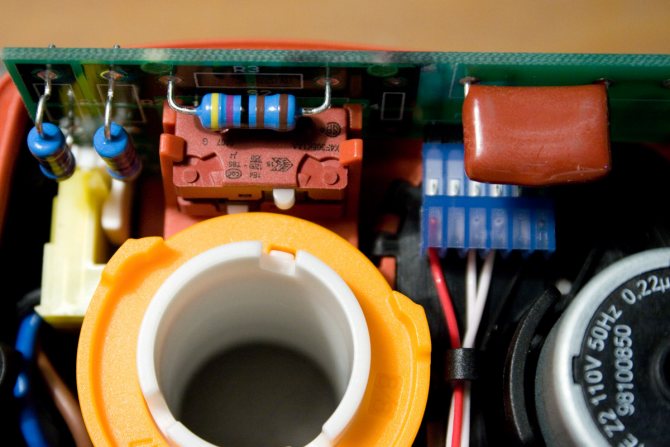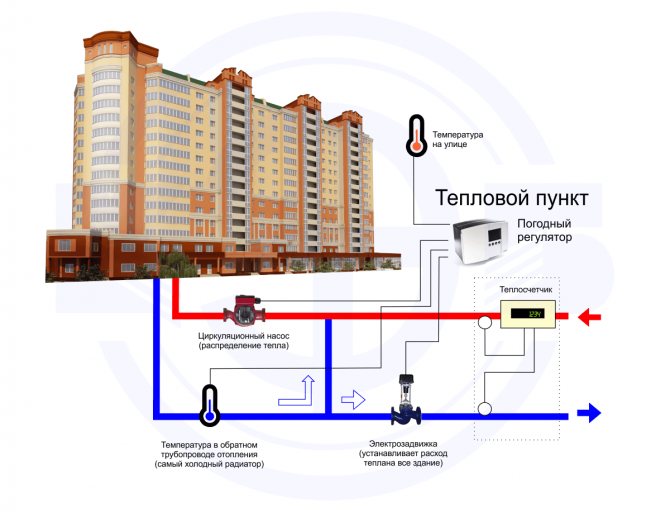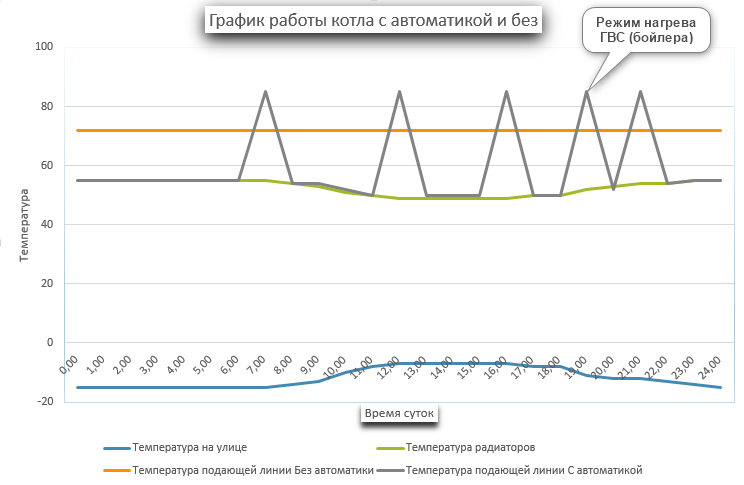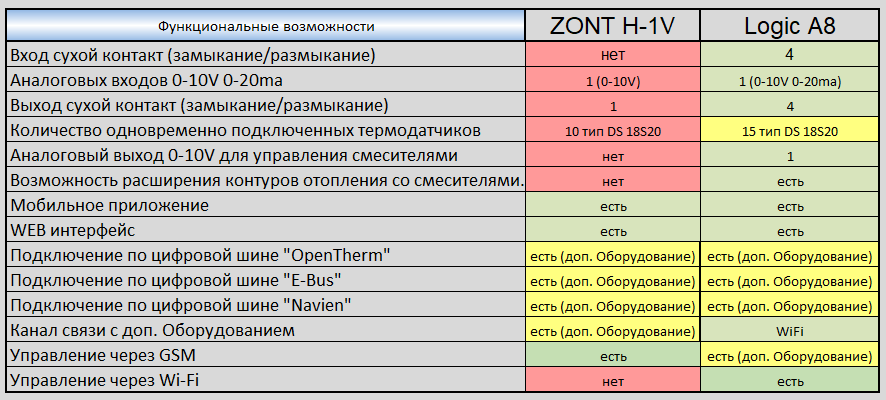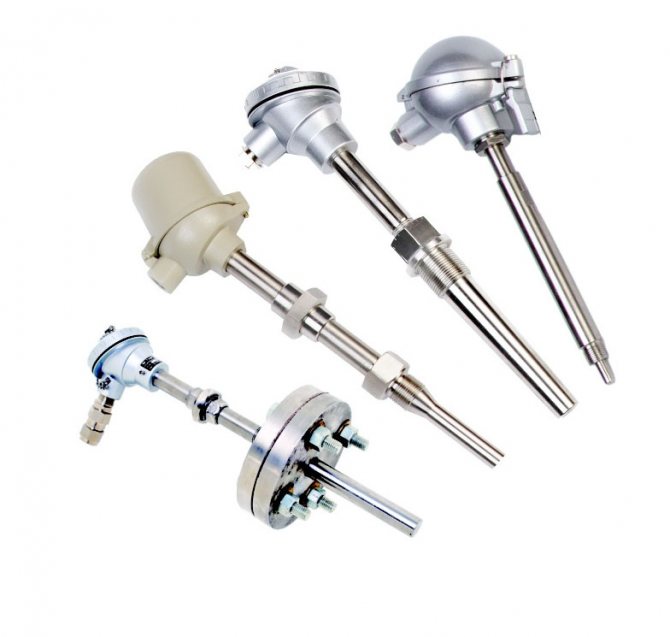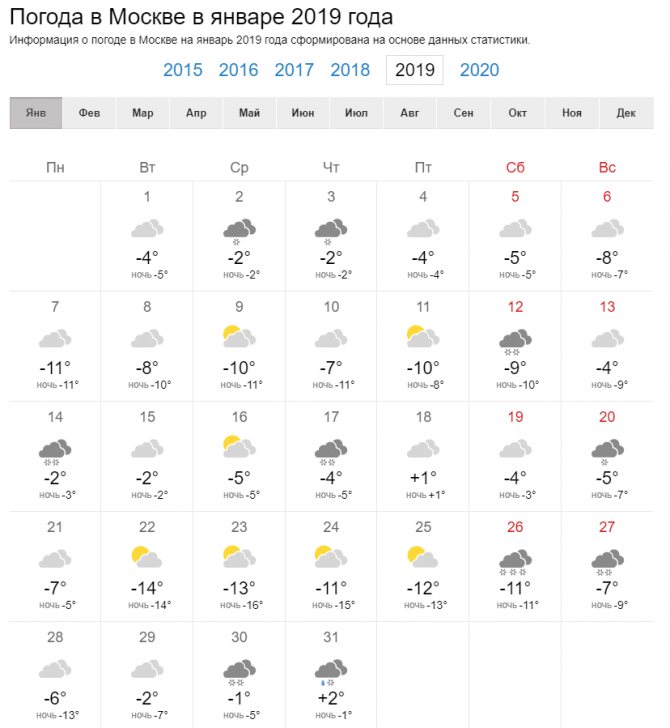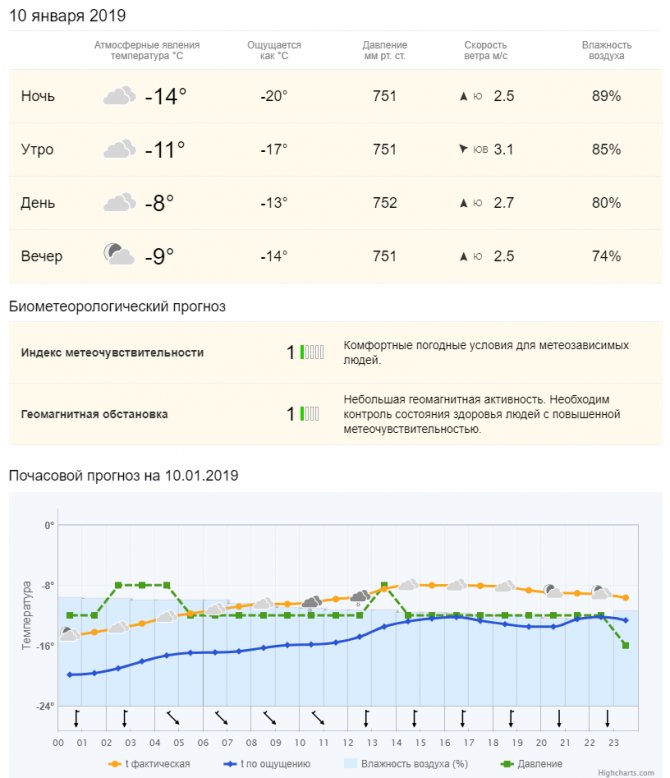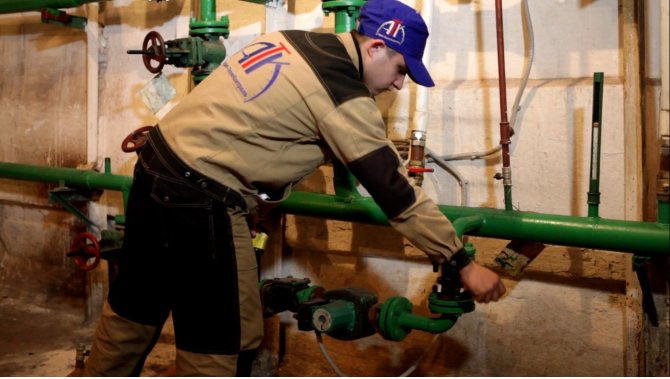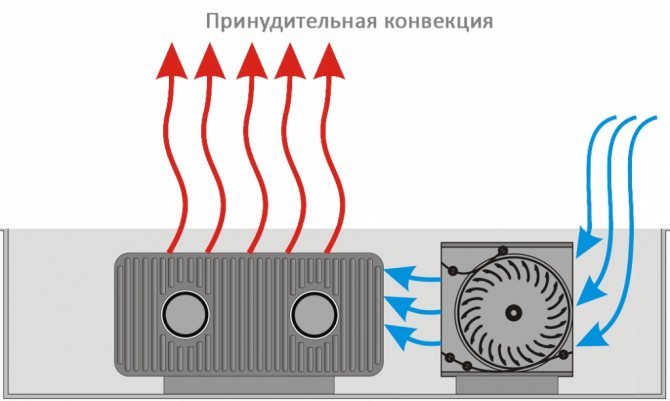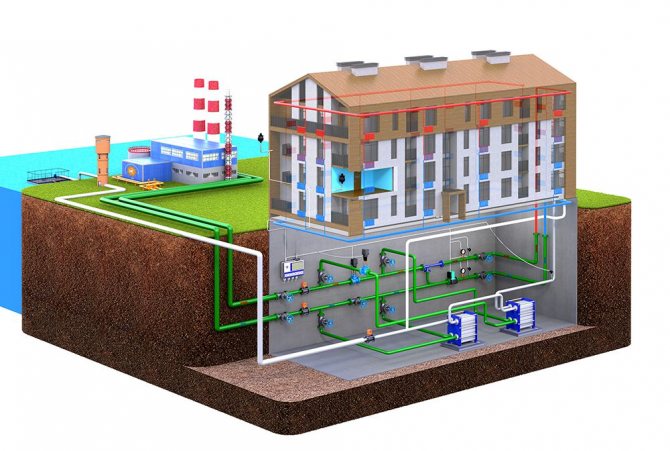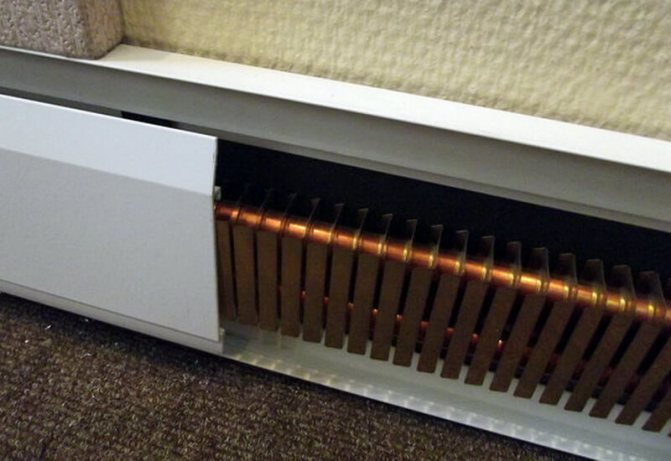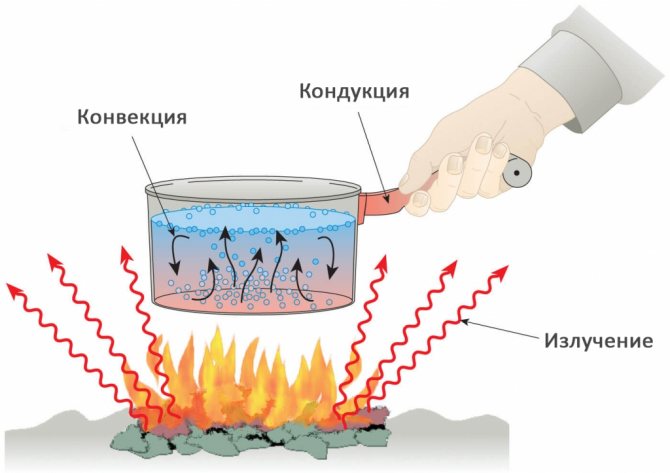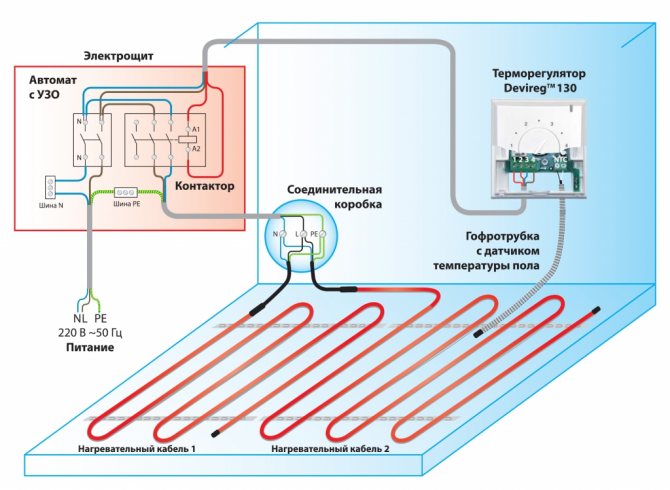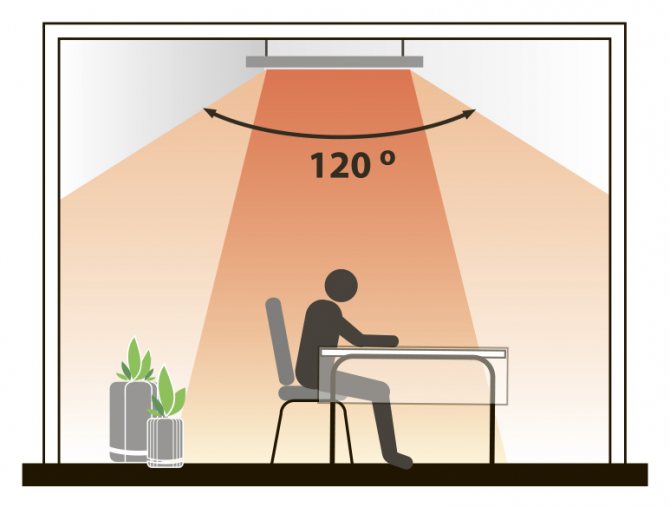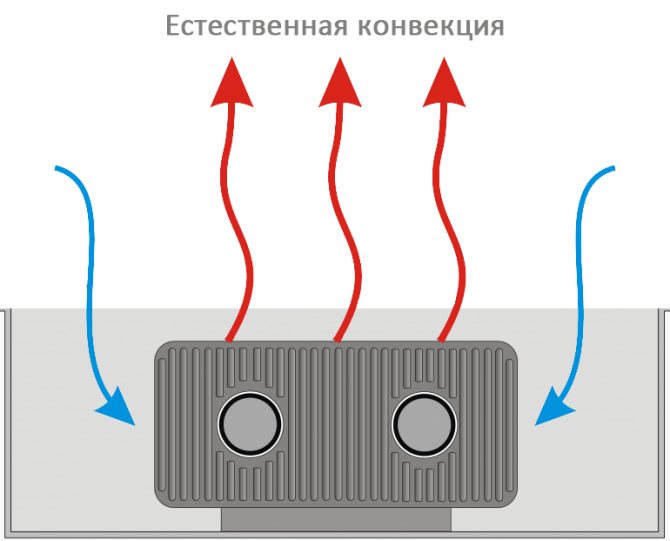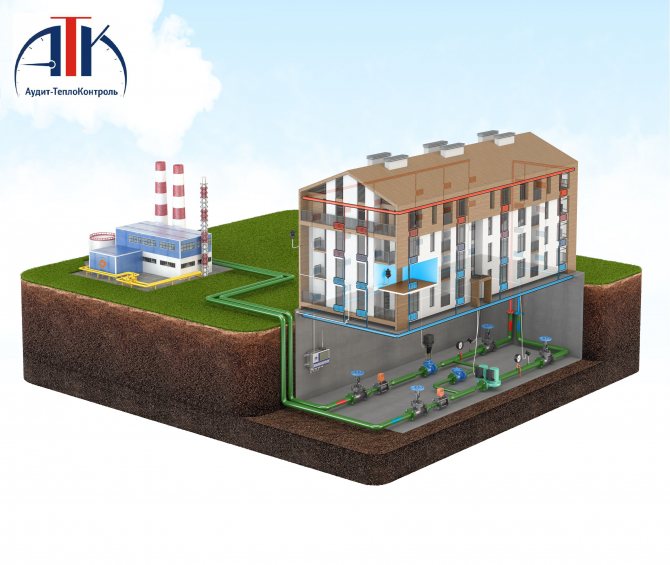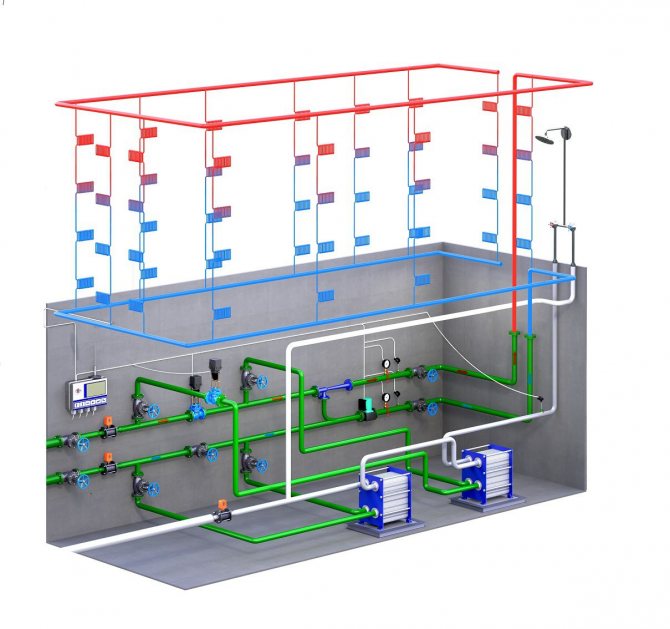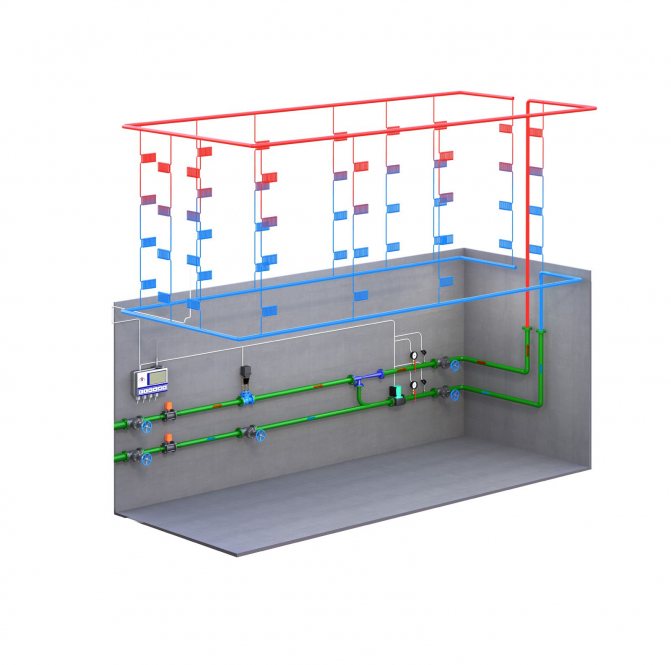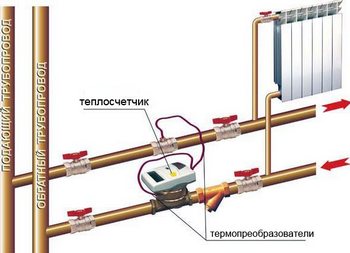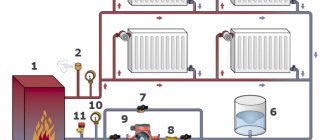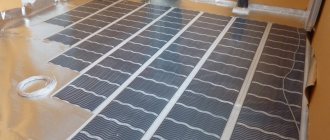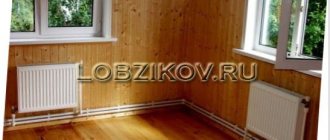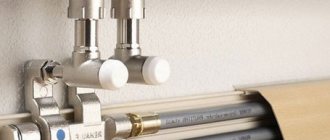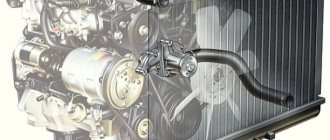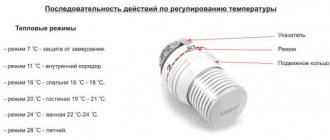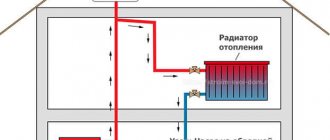It is noteworthy that automation for a private house can be installed on almost any heating system. Despite this, many still do not understand why exactly to automate the system and what it is all about.
To order the installation of automation for a private house - call +7 495 205-205-2
Already based on the name, we can conclude that the automation is designed to minimize human intervention in the heating process. Thus, the automatic program frees the person from constantly adjusting the indoor temperature. But many neglect this and rely on manual control. On the one hand, this is a significant expenditure of personal time, and on the other hand, in most cases, automation is necessary for the safe and reliable operation of the system.
Usually, the term "automation" means a whole list of different devices that monitor the operation of the entire heating system and the boiler in particular. It should also be noted that automatic control will be more accurate anyway.
Automation for heating a private house
The main task for which the automation for heating a private house is responsible is to maintain the required temperature inside the premises. As you know, regulation takes place depending on the outside temperature. Thus, you can easily provide yourself with a comfortable environment inside the house.
Another benefit of automation is cost savings. Again, taking into account the fact that the temperature is regulated depending on the outside air temperature, the system will automatically lower the heating temperature if it suddenly becomes warmer outside.
It is noteworthy, but the automatic system can increase or vice versa decrease the temperature inside the room, depending not only on the weather outside, but also on the days and hours of the week. For example, if there are few or no people in the house on weekends, then you can set the program in such a way that it does not heat the room as intensely, but at the same time maintains the optimal temperature. Of course, this will have a positive impact on cost savings.
The main advantages of heating system automation include the following:
- The program allows you to adjust the temperature inside the house at the request of the owner. If it has become much warmer outside, then you can program the system in such a way that it lowers the heating temperature, thereby maintaining a comfortable indoor environment;
- It is possible to control the temperature depending on the day of the week or at certain times of the week;
- In suitable conditions, the automation will always reduce the heating temperature, thereby saving the owner's money;
- Automation of the heating system will provide reliable protection against overheating of the coolant, monitor the pressure inside the system, and also control the supply of water or gas to the system.
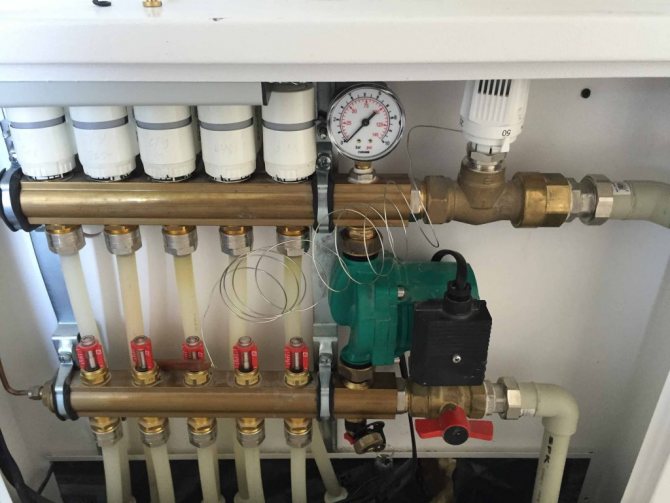
Thermostats
Thermostats are a control element of the system and can be mechanical or electronic.
Mechanical thermostats consist of a thermal head (sensing element) and a valve. The working fluid of a sensitive element is a liquid, gas or an elastic element that changes its shape depending on temperature. When the air temperature in the heated room changes, the volume of the working fluid changes. The sensing element reacts to this and moves the regulator valve stem. Thus, the flow area in the channel changes.
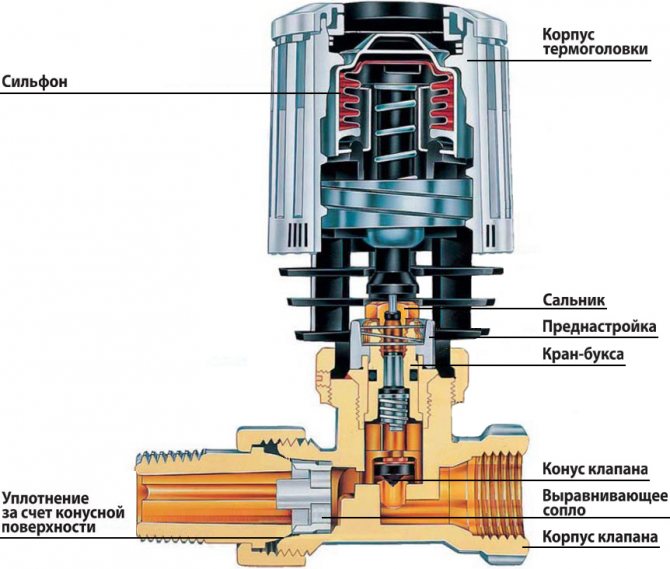

Electronic thermostats (ET) ... This is an automatic device consisting of several devices that ensure the maintenance of the set temperature in thermal installations. In the heating system, they automatically control the operating modes of equipment and actuators (boilers, mixers, pumps, valves, etc.), when the result of their operation will be the creation of a temperature regime in the room specified by the user.
Digital thermostats are available with "open" and "closed logic". Closed logic implies rigid control algorithms and a certain set of external devices connected to the system (sensors, drives). Only limited parameters can be changed, the user cannot program control algorithms.
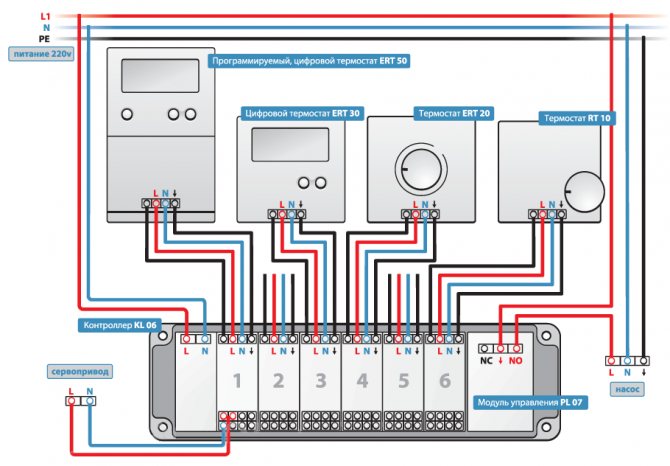

In large systems, open logic thermostats are used - these are freely programmable controllers with a wide range of settings and functions. They can be incorporated into a centralized building management system. They are mounted in automation panels. The installation and adjustment of such thermostats requires certain qualifications.
Automation of the heating system of a private house
In addition to all the listed advantages, automation of the heating system of a private house also has several disadvantages:
- The main disadvantage is its price. If we compare the cost of automation with the cost of a conventional thermostat, then the latter will cost literally "pennies";
- In order to save on heating at a certain time of the day, while having manual control, it is necessary to independently carry out all the manipulations with the system, which is not always convenient and possible. In order to fully automate this process, you can buy or order weather-dependent or programmable equipment for a specific system. But it is worth noting that it will not be possible to find it inexpensively, since it costs a little more than conventional equipment;
- If heating is carried out with the help of a gas boiler, then the fuel consumption will increase when the heating is switched on and off periodically. Saving fuel in this case is much more difficult than with other modern heating boilers.
Heating system automation in a private house
Even at the stage of the future construction of a private house, the question arises of which heating to choose in order to provide a comfortable environment in the house and minimize the cost of maintaining the entire heating system. Usually, the choice of heating a private house comes down to three main aspects of the choice:
- Which boiler to choose;
- What will be the configuration of the heating system;
- Heating system automation in a private house.
As for the choice of the boiler, which is the main source of heat in the house, there are three main types of it that are most popular among consumers. Each type has both advantages and disadvantages.
- A gas boiler. This will be the most profitable option if there is a main fuel supply line. In the absence of this line, you can use liquefied gas in cylinders, but this does not reflect in the best way on the cost of servicing the heating system;
- Electric boiler. This is a rather expensive option and requires a lot of electricity. To minimize costs and provide a comfortable stop in the room, they resort to installing electric underfloor heating, which is much more economical;
- Solid fuel boilers. It is very popular among consumers, as it makes it easy to organize an autonomous heating system. But there are some nuances: the maintenance of such a system causes some inconvenience. In addition, such boilers are best used to heat small houses or use it depending on the season.
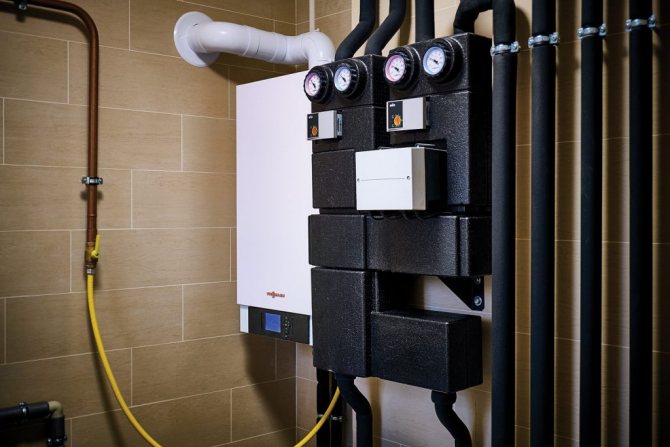

Automatic control options
Automatic control is performed three devices.
Heating boiler
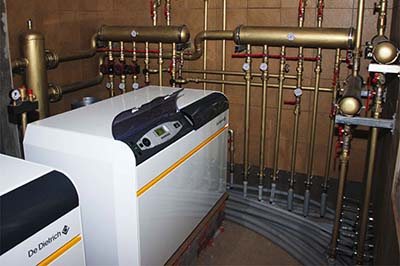

Used for ease of management. Automation is installed in office buildings, less often in private or industrial buildings. The following apply types of devices:
- electrical;
- liquid or solid fuel;
- gas.
Each of them has advantages over the others. When choosing, they turn to the wizard, who will tell you which device is best suited. In most cases, recommend standard solid fuel boilers.
The automation partly depends on the used type of fuel. Its task is to compare the readings of meters installed in the house and on the street. The difference in values determines the need to increase the supply of resources for more heating. This does not apply to devices based on hard materials. In the latter changes pump intensitysupplying liquid to pipelines.
Thermostatic valve
The simplest option for automatic heating control in a private house. The device is placed to any heat source. Then the temperature is set, which is maintained.
Unlike boilers, this device affects the flow of coolant into radiators or warm floors. In this way the heating of the room changes.
Important! This applies to all appliances except gas. The latter are controlled directly by the device.
Advantages of thermostatic valves:
- Ease of installation.
- Ease of Management.
- Low cost of the device.
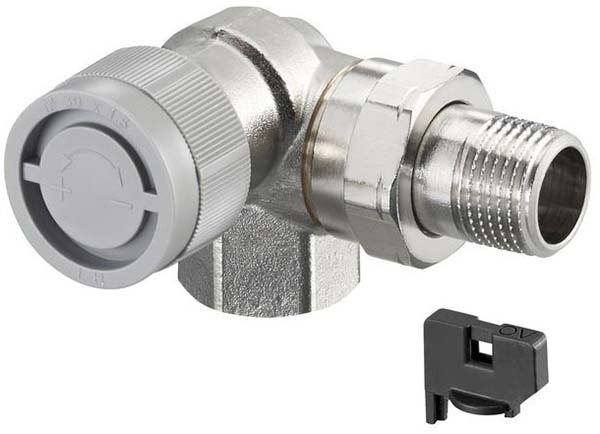

Photo 1. The Oventrop thermostatic valve, which influences the flow of the heating medium, is easy to install and operate.
Disadvantages:
- Difficulty achieving savings on resource costs.
- The high cost of heat exchangers with a built-in valve.
- Acceleration of the wear of the gas boilerheating the working fluid. This is due to frequent on / off switching. And also the fuel consumption increases.
- Solid fuel heaters deteriorate due to the flow of boiling water through the return line.
- The temperature is changed manually, since the device is only able to support the given one.
- A separate valve is required for each radiator.
Room temperature controller
Used along with the previous two. It can be installed in any room of the building. The main difference is temperature sensor testinstalled inside a heated building.
In gas, liquid and electric boilers, the regulator directly affects the heating of the coolant. In solid fuel he controls pump operationsupplying water to pipelines.
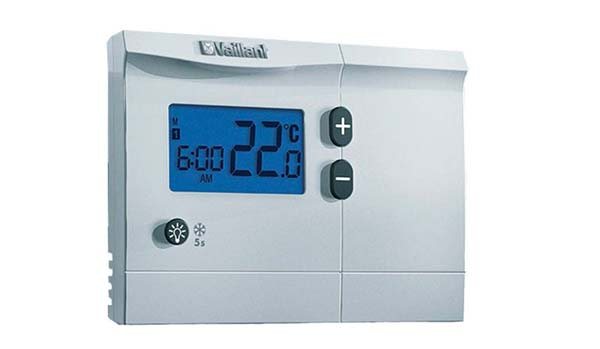

Photo 2. Temperature controller for the room Vaillant VRT 250, it affects the heating of the coolant.
In simple devices, it is enough to set the required temperature, as for a valve. Some devices can be programmed. Allocate two disadvantages:
- Customizable dear, which limits the range of people who can acquire them.
- The temperature of each room depends on the one in which the appliance is located. This does not apply to programmable automation.
And also allocate 4 benefits.
Room temperature control in a suburban dwelling
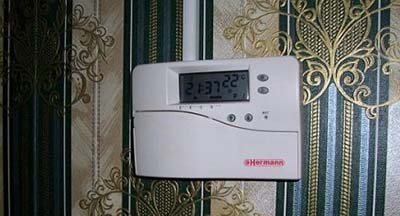

The device takes readings of sensors on the street and in the building, verifies them.
Based on the test results, the boiler receives a signal: increase or decrease fuel supply.
Thus, the heating of the coolant is controlled. Unlike a thermostatic valve, in this case all pipelines are warming up.
System programmable
Some types of automatic devices customizable. They are asked to change the temperature in the room by various factors, for example, days of the week, time of day or year. it facilitates thermoregulation.
Attention! Programmable ones are more expensive than simple ones, and for thorough configuration you will need invite the master.
The presence of two types of sensors
The device is guided by the readings of meters located indoors and outdoors. The need for heating is determined by temperature difference. This allows you to constantly save fuel, but increases depreciation of equipment.
Remote control
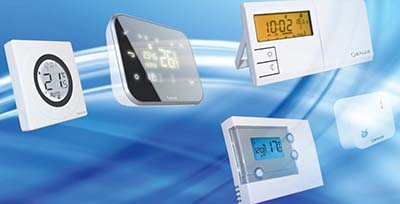

Some devices are controlled remotely. To do this, a receiving device is built into them. phone signal, SMS or Wi-Fi... Commands are given from a long distance, which is useful when traveling.
This allows, for example, turn on the boiler before returning, warming up the room.
Combined
Includes thermostatic valve and room regulator. This option is used more often, although others are also possible. In private houses it is used to create a beautiful interior, and in work and industrial buildings - to simplify heating control.
A combined design is called not only two automatic devices, but also a combination of the following devices:
- boilers with different types of fuel;
- heat pumps;
- solar panels;
- geothermal heating;
- automatic equipment.
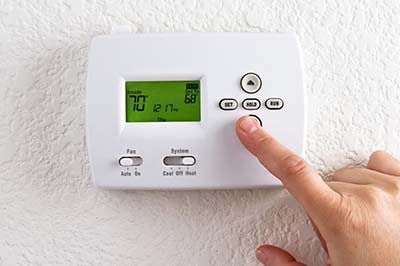

Of these, there are many different combinations, each of which has advantages.
A commonly used circuit is a thermostatic valve and a room temperature controller. Its advantages:
- low cost, low resource consumption;
- high efficiency, about 92%;
- automation of most of the heating;
- easy control;
- a wide range of tasks;
- variability in installation.
Disadvantages:
- the complexity and high cost of installation and configuration;
- the presence of natural gas in the house is required;
- for installation in an apartment, obtaining permits is required.
Heating automation
In order to increase the efficiency of heating, as well as the ease of use of the entire heating system, heating automation is used. This includes the following components:
- Thermostatic valve;
- Thermoregulator;
- Room regulator with thermo-valve and more.
The use of such equipment will ensure more efficient operation of the system, as well as reduce energy consumption, while this will not affect the comfort of the residents. Thanks to such devices, it becomes very easy to control the heating system, and the temperature inside the house will always meet the needs of the residents.
Requirements for radiators for automated heating systems
The efficient operation of automated heating systems is impossible without the use of heating radiators, which have a number of necessary properties. First, such radiators must have low thermal inertia, i.e. quickly heat up and cool down, which will allow the automation to flexibly control the temperature regime in the room. Secondly, radiators must have a high heat transfer, which makes it possible to use relatively small volumes of heat transfer fluid in the heating system. As a result - an additional decrease in the inertia of the system, as well as an increase in its energy efficiency.
Heating automation
Today, heating automation in a wide range is represented by thermostatic valves. This device is designed specifically to be able to regulate the air temperature inside each individual room in the house. This device can be installed either on a heating radiator or on a floor heating circuit. Its functioning is quite simple. The owner will only have to turn the thermostatic valve head to the figure that is needed and the device will quickly raise or lower the temperature to the set level. This is where human intervention in work ends.
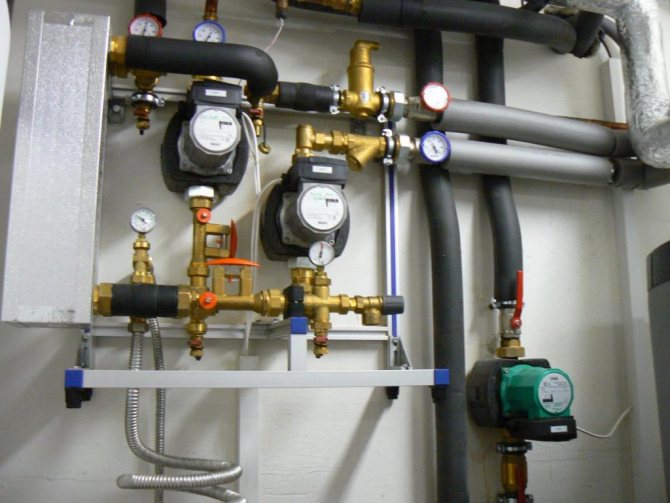

The rest of the process is carried out automatically. After the temperature in the room rises above the set value, the valve will close the circulation of water to the heating radiator.After the temperature drops below the specified level, the supply of the heating medium will be restored again. In this case, the valve is constantly in operation, and its action is quite simple.
It is worth noting that such a scheme will continue to function regardless of whether the coolant supply in the boiler is regulated or not. This does not depend on the boiler used. Such valves can be installed in those heating systems that use a gas or solid fuel boiler. And even if we are talking about an electric boiler, then thermo valves will not be superfluous here either. Best of all, such a device manifests itself with solid fuel boilers. It is known that regulating the temperature with such boilers is not only difficult, and sometimes impossible.
Energy saving tips
An effective way to save energy is the use of automation devices that allow you to maintain different day and night temperatures in the premises. So, in non-residential premises, you can lower the temperature at night, and during the day - set it exactly at a comfortable level, but not higher. This is important because an increase in temperature by just one extra degree leads to an increase in energy consumption by 5-7%.
You can also save heat in living quarters. Automation with a timer-programmer, in accordance with the individual needs of the user, will regulate the heating temperature and the operating time of the heating system in a given mode. As long as the residents of the house, the system will maintain a comfortable temperature, and when they are at work, study, away, etc. - will switch to economy mode and provide the minimum required temperature (for example, for plants or pets).
Energy efficient technologies such as heat pumps and condensing steam boilers are also significant savings in heating systems.
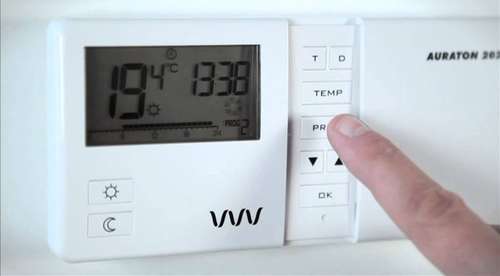

Heating automation in a private house
It should be noted that in this case, the automation of heating in a private house does not imply savings, since the thermostatic valve simply does not allow this. And there are several main reasons for this:
- Using such a device, the power of the heater increases by approximately 15%. If you do not use such a device, then it is possible to choose a weaker radiator. We can say that in this case, the device played not a good joke. The higher the power, the more expensive the heating device;
- In this case, the heating boiler will not be in the most comfortable conditions for it. This will be reflected in the increased fuel consumption, as well as in its operational period. It is very difficult to imagine how many times a day a gas boiler can turn off and turn back on. Of course, this does not reflect in the best way on its service life. With solid fuel boilers, the situation is even worse, since here the likelihood that the boiler will simply boil increases significantly;
- There is one more point that already requires human intervention. In order to save on fuel, it will be necessary to manually reduce the temperature of the coolant when there is no one in the house. This can be done in two ways: the first is to cut the amount of fuel for the boiler, and the second is to set a reduced temperature indicator on each individual thermo-valve. As practice shows, many simply forget about this, so the issue of saving is not resolved here;
- The cost of such equipment is far from small. In addition, the final amount will vary depending on the heating batteries. We multiply their number by the price of one thermostatic valve and we get a pretty solid amount.
Heating systems automation
If more modern automation of heating systems is needed, then today manufacturers offer rather unique devices that will distinguish all the requirements of our time. This includes a room temperature controller. Basically, such devices are installed right in the room. It is wall-mounted and allows you to control the room temperature. The uniqueness of such a device lies in the fact that it performs a whole range of different tasks. It can turn on or off the fuel supply when it comes to gas or electric boilers, and also turn on and off the sediments for the circulation of the coolant when it comes to solid fuel boilers.
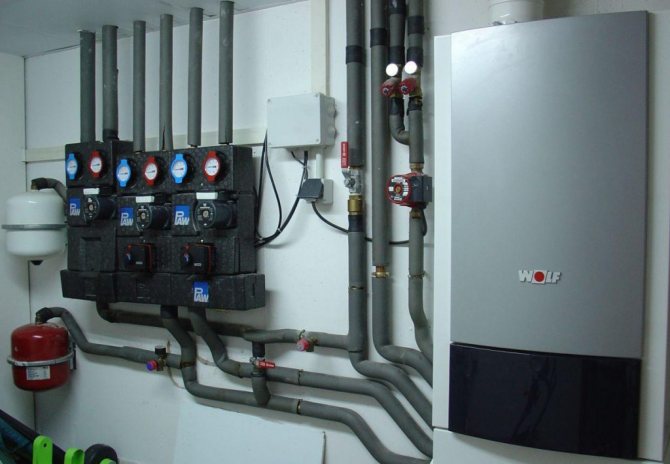

How is it done
It should be noted here that automation for heating a private house can be built using a variety of devices that work both autonomously and under the control of centralized systems.
Heating boiler control
With this approach, all heating control is reduced to setting the temperature of the coolant on the boiler. In this case, the automation built into it begins to work; for heating that works in this way, control on the boiler is quite enough. It will maintain the required coolant temperature regardless of its value in the premises.
Read more in the article - automation for a heating boiler.
Thermostatic valve
Perhaps this is the simplest automatic heating temperature controller. It is installed on each radiator, and on it (on its head) you can set the desired value. In cases where it gets too hot, the regulator is triggered and shuts off the flow of coolant into the battery. When the temperature drops below the set value, the valve opens and water begins to flow into the radiator, heating the room.
Automation for gas heating boilers
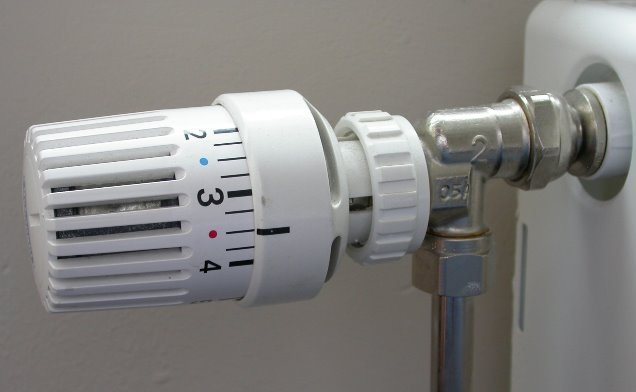

Thermostatic valve
Such automation of heating a private house works without reference to the temperature of the coolant, in fact, being universal and independent of the type of boiler used (gas, solid fuel, liquid, etc.).
The disadvantage of this approach should be considered the lack of savings due to the impossibility of controlling the boiler and fuel consumption.
Room temperature controller
In this case, a special temperature controller is installed in the room - in fact, a heating controller. It changes the heating of the coolant (turning the burners on or off, regulating the water supply, etc.), providing the desired mode.
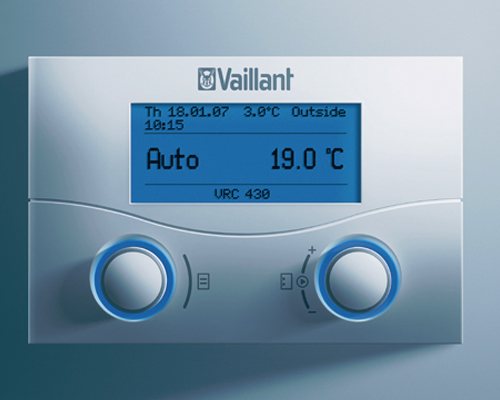

Room temperature controller
In fact, in this case, the control is completely electronic, the heating of the house works according to commands from a special center and can implement any given operating mode. If a similar control and regulation structure is equipped with remote communication units and a GSM module, an automated heating system control unit with remote access will be formed.
Heating system automation
Such automation of the heating system, which is represented by room temperature controllers, has the following advantages:
- The device is responsible for controlling the temperature in the air, not inside the coolant. Considering the fact that the volume of air is greater than the volume of water, there will be no sudden temperature jumps. This will have a positive effect on the operating period of the boiler, since there will be much less shutdowns and shutdowns. Experts note that the use of such automation allows for 30% savings;
- The device is programmable. It can be installed in such a way that one air temperature will be kept until the evening, and before the arrival of residents, it will rise. Savings in this case are obvious. It is noteworthy that each lower degree of air temperature provides 6% fuel economy;
- There are also more functional sensors, which consist of two devices, one of which is installed directly inside the house, the second on the street. This is necessary so that the temperature in the house is completely dependent on the temperature outside. Such devices are called weather-dependent;
- With the help of such a device, you can control the process of heating water in the boiler, as well as control the circulation of the coolant along the circuits on different floors, as well as in the underfloor heating system. Another big plus of such a system is that it can be controlled via the Internet or via SMS chat.
How to reduce, decrease, decrease heating bills?
Insulation of facades, roofs, doors, windows will increase the room temperature, but not save money, because residents will simply begin to release excess heat through windows, although these measures are necessary to solve the complex problem of energy conservation and energy efficiency.
What to do?
Automatic adjustment of the heating system will help to avoid overheating of the premises after the measures taken to increase the thermal resistance of the enclosing structures. The system will create conditions under which heat will flow within the limits of reasonable sufficiency, creating living comfort for all residents.
Regulation of batteries and radiators.
Separate apartment heating control did not take place because residents who are at home during the day run up the heating in their apartment, warming themselves at this time by the heat radiated from the walls, floor, ceiling of neighboring apartments. At the end of the month, the figures for heating bills vary greatly between apartments. Many tenants find this unfair.
Manual regulation of heat, heating systems.
Principle: The colder it is outside, the more intensively the heating system should work and, conversely, when the air temperature in the house rises above the limit value, the temperature of the coolant in the heating devices should decrease.
The easiest way to regulate the heating system is to manually control the operation of the control unit - limiting the flow of coolant, shutting off valves (valves, ball valves, butterfly valves). The level to which the tap is pressed can be determined by the readings of the heat meter. On the heat meter, it is necessary to select the parameter display mode - instantaneous flow rate of the coolant.
Why didn't manual adjustment take root?
After pressing the valve, the flow rate of the heat carrier from the heating network drops, and the heating system of the house is inhibited. The circulation of water through the risers of the heating system slows down, the temperature difference between the supply and return increases. As a result of these processes, the cooled coolant reaches the last batteries on the riser.
In houses with an upper heating system spill, there will be excess heat on the upper floors, while the lower ones will freeze.
In houses with a lower spill of the heating system, the opposite is true - the upper floors freeze, the lower ones are forced to release excess heat into the street.
Disadvantages of Manual Heating Control:
- The circulation of the coolant is inhibited.
- An imbalance in the heating system appears.
- It's cold in one wing, hot in the other.
- With a sharp cold snap, the locksmith may not have time to open the valve.
- In case of excessive closing of the valve, the heat meter may generate an error.
- The shut-off valves are worn out, they are not intended for adjustment.
- The locksmith is tied to the heating unit.
- The need to personally react to changes in the weather.
Find out more about manual adjustment!
Get a free consultation with a heating engineer!
Heating control automation
As for the price of a room regulator, such automation for heating control will directly depend on the chosen model. You need to understand that the difference in cost is quite noticeable. If you choose a weather-dependent thermostat, then it will cost 5-6 times more than a regular one.But there is an effective way to solve this problem. To do this, a thermostat can be installed in one of the rooms, and thermostatic valves can be installed on the radiators in all the others. On the thermostat, you need to set the required temperature, and turn the valves manually.
Heating system automation
What is the advantage? The fact is that expensive automation for the heating system will affect the operation of the heater itself, constantly turning it on and off. As for the thermo valves, they will have nothing to do with the boiler, since they will only monitor the temperature in the room where they were installed. But there is one small drawback here. For example, in one room where the room temperature controller is installed, several people have gathered. Of course, the temperature in this room will begin to rise rapidly. Accordingly, the automation will react to these changes and the fuel supply to the boiler will be sharply reduced. Naturally, this will lead to the fact that the temperature throughout the house will begin to decrease. If it will be quite comfortable and warm in the room where people have gathered, then in other rooms it will become much cooler.
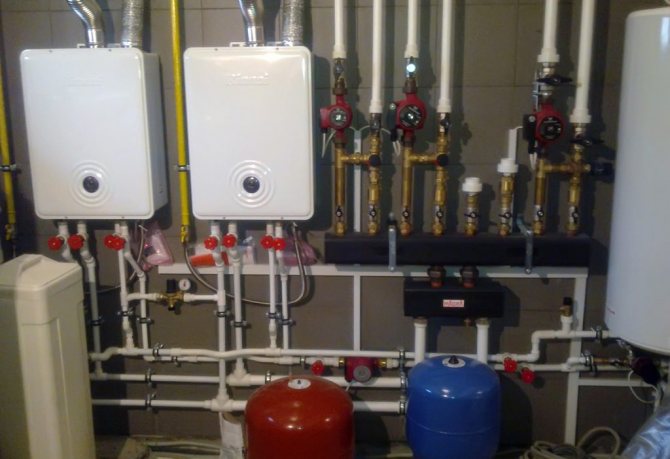

A completely logical question may arise - how quickly the automation will react to temperature changes. If we take into account the fact that a person emits about 100 watts of thermal energy, this indicator needs to be multiplied by the number of people and we will get the desired result. As practice shows, in an average room, where about 5 people have gathered, the air temperature will increase by 1 degree in half an hour. It is also worth considering the moment with the location of the room where the regulator is installed. If the room is on the south side, then it will always be warmer than in other rooms. All this must be taken into account before buying an automatic thermostat.
Automation in a private house
In addition, automation in a private house can be simultaneously represented by a room regulator and a thermo valve. This combination has already been discussed a little higher. But is this "symbiosis" really as effective as they say? Practice shows that the savings are really significant. And this fact is influenced not only by a decrease in the energy carrier, but also by the lower cost of thermo valves.
The functions in this case are allocated based on the importance of each of the devices used. The room temperature controller will be the main one of the whole chain, which will control and regulate the boiler operation. In simple words - he will carry out the basic work adjustments. As for the three valves, they will be a kind of additions that can correct the temperature in the rooms where they are installed.
As for the cost of automation, it is also influenced by the type of heating, as well as the presence of underfloor heating, etc. Using a combined type of automation, the price for it will increase. Despite this, its presence will reduce costs, which directly depend on the gas pipeline, as well as on the location of all the necessary authorities. Before making your choice in the direction of a particular device, you need to become familiar with all types of automation of the heating system. This will allow you to select the right type of device, as well as calculate the approximate cost and future savings. If it is difficult to do this on your own, then for help you can turn to a specialist who will do all the work for you. In this case, the risk of spending even more personal funds, which were allocated for the arrangement of the automation of the heating system, is significantly reduced.

